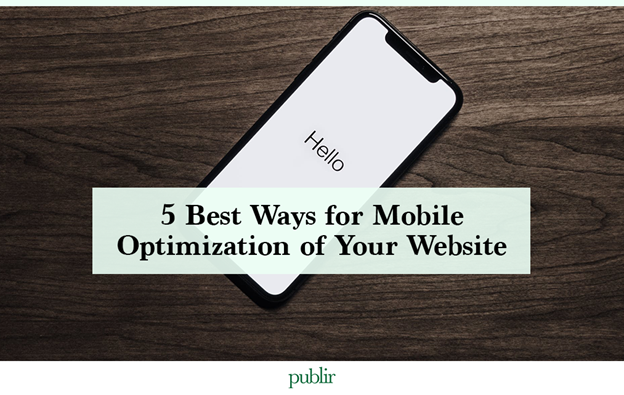
You’ve done it! You have millions of users each month, you are successful. People come, they read your blogs, they check your about-us page, and then convert to customers. Then, you open google analytics, you filter by device, and BAM!
You see a 50% decline in mobile users’ session duration, page visits, and increased bounce rates compared to desktop users. What happened? Well, the thing is, mobile optimization is a key aspect of overall website and blog optimization, and if you neglect it for long enough, you might just lose half of your users.
Let’s check the five best ways to fix that as quickly as possible.
1. Responsive Design Is a Must

Employing a responsive design ensures that your website works smoothly and looks nice across all platforms, including mobile ones and even tablets. This makes it simple for your mobile audience to read and navigate your site and read your content, since the design should instantly change to match the screen size of the device.
While you are creating content, you should keep in mind that, according to Oberlo, over 52% of worldwide internet users are on mobile devices, and just 47% come from desktops.
That means every single paragraph you write should fit on half a mobile screen. If it doesn’t, you are giving your mobile users a bad experience of reading walls of text.
2. How to Optimize Your Website for Mobile Search
Mobile-friendly design, mobile-focused keyword research, and on-page optimization tactics such as optimizing titles, headings, and meta descriptions all count as website and blog optimization and are easy changes for you to rank better in mobile searches.
Believe it or not, keyword optimization can vary per device. Readability, visibility, and usability of the mobile interface of your website on mobile are way more important for Google than people usually think.
That’s why you must ensure that your typefaces and font sizes are mobile-friendly by using those that are simple to read on a phone or other portable device. Be away from using tiny or elaborate typefaces that could be challenging to read on smaller displays.
For body content, choose a sans-serif font with a minimum font size of 16 pixels. Sans-serif fonts are simpler to read on smaller screens.
3. Optimize Media and Images for Mobile

Optimize your photos and media. Oversized images and media files might make it difficult for mobile viewers to access your blog. Convert everything to a .webp format and turn your icons to svgs. Compress photos and media assets to minimize their size without losing quality in order to optimize your content for mobile devices.
You can use this free online tool to convert your images to webp for a few seconds per image. This will hasten the loading of your blog on mobile devices. And that’s a big deal.
4. Simplify Everything for Mobile
Simplify the whole navigation of your website so your audience can stick around for longer. It’s a key feature of your non-desktop design, particularly for mobile readers. Use a simple, straightforward menu that is simple to access and browse on a mobile device to streamline your navigation.
To make it easier for people to find what they’re searching for, utilize dropdown menus, icons, and labels, and don’t add any useless sidebars or sections that have no function.
5. Use a CDN and Optimize Speed
Improve the speed at which your blog loads for mobile readers since a slow-loading site might result in high bounce rates and people never really coming back ever again.
Reduce HTTP requests, improve scripts and code, and utilize a content delivery network (CDN) to provide visitors’ material from the nearest server to increase the speed at which your blog loads. To hasten the loading of your site, you may also employ caching plugins.
CDN is amazing. It will not only allow you to instantly replace images on your website by replacing the images directly in the directory and overlapping the link, but it gives you full control of your website. There are practically no big websites around the world left that don’t use CDN.
The main reason is that it relies on several servers around the world and serves the closest for each user, which greatly optimizes website load-time, especially when loading heavy resources like images, graphs, or videos. While this is not a part of SEO blog post optimization, it is something to have in mind if your general website is growing or you plan to serve millions of users.
Never Miss an Opportunity
Having a successful website but not optimizing it for mobile is like having a product everyone wants but selling it only to men or only to women. Don’t cut the wings of your website by limiting its usability to desktop users only.
Make the leap and invest in mobile optimization. It’s definitely worth the time and effort. Resources are best spent when there’s a steady cash flow coming from your website. Have you done everything you can in terms of Ad optimization, subscriptions, and Adblock recovery? If not, make sure to check Publir’s solutions that solve all of that and more in a matter of minutes.
